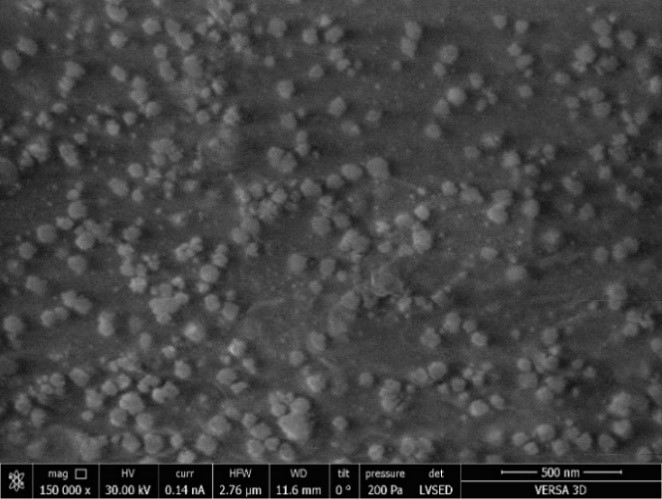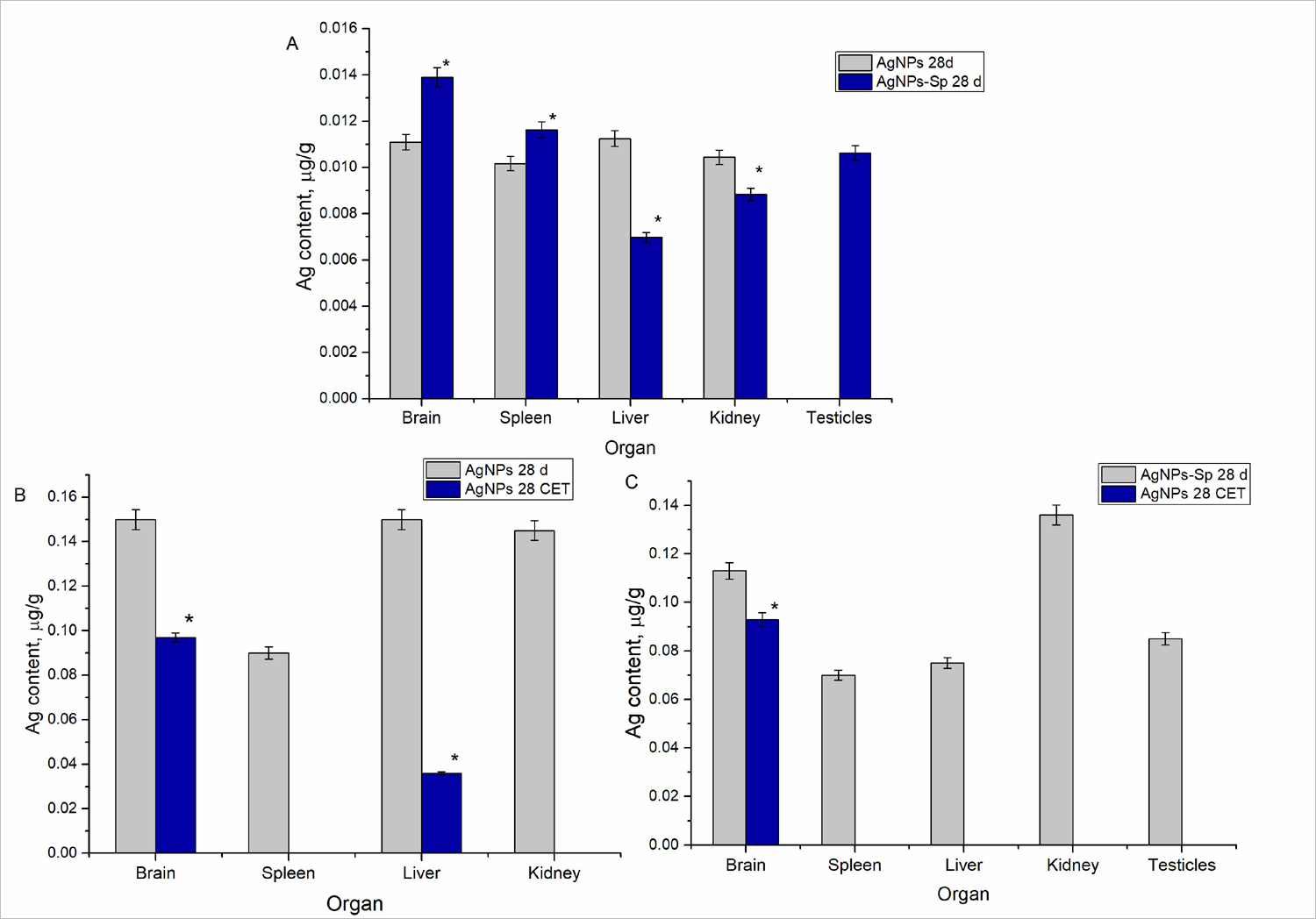Are silver supplements always useful?
News, 12 April 2022
Scientists of the Laboratory of Neutron Physics in cooperation with the Institute of Microbiology and Biotechnology in Moldova, a JINR Member State, have studied how silver nanoparticles behave in organisms of animals and the way they effect the state of animal organisms. Silver nanoparticles are widely used in different industry fields, including food manufacturing and cosmetic industry. The results of the conducted research give grounds to suggest the toxicity of these nanoparticles and can mean that their use will have to be restricted or at least strictly regulated in perspective.
Nanotechnology is a new direction of science and technology actively developing in recent decades. Nanomaterials are increasingly common in human life, and nanoparticles due to their unique properties have perfected many sectors of production and consumption, including medicine where they are used for drug delivery. Silver nanoparticles (AgNPs) are the best studied to date. They have pronounced antibacterial properties with low toxicity and no negative effect on the indigenous microflora of animals. Properties of nanoparticles also depend on the shape and size of particles. It determines their areas of application and limitations.
Scientists of the Laboratory of Neutron Physics JINR in collaboration with scientists from the Institute of Microbiology and Biotechnology have started a series of scientific works on studying the toxicity effect of metal nanoparticles on animals. The main aim of the present research was to study the effect of unmodified (AgNPs) and modified by biomass cyanobacteria Spirulina platensis (AgNPs-Spirulina) silver nanoparticles on rats during prolonged oral administration. The functionalization of nanoparticle surface (Fig. 1) with various biomolecules in a controlled manner involves a change of their properties such as prevention of aggregation or amplification of the antimicrobial effect.
“In this study, unmodified and functionalized Spirulina platensis biomass (blue-green algae) silver nanoparticles were considered. Unmodified silver nanoparticles can “aggregate”, which leads to a change of their physical, chemical, and antimicrobial properties. To prevent aggregation, we tried to add spirulina, which is non-toxic to living organisms and well-studied. Unlike many cyanobacteria, it does not produce algotoxins in response to metals and other pollutants,” Head of the research from JINR, Head of the Sector of Neutron Activation Analysis and Applied Research of FLNP JINR Inga Zinicovscaia comments.
 Fig. 1 Functionalized Spirulina platensis biomass silver nanoparticles
Fig. 1 Functionalized Spirulina platensis biomass silver nanoparticles
The experiments with animals were performed in the vivarium of the Laboratory of Stress Physiology, Adaptation, and General Sanocreatology of the Institute of Physiology and Sanocreatology (Chisinau, Moldova). Animals were divided into four groups with different food rations: 1. Negative control group (C1) – regular diet; 2. Positive control group (C2) – regular diet admixed with spirulina biomass; 3. Experimental group 1 (AgNPs) – regular diet admixed with AgNPs; 4. Experimental group 2 (AgNPs-Sp) – regular diet admixed with AgNPs-Spirulina. The experiment took 28 days.
The silver content in rat organs (brain, liver, spleen, kidneys, testicles, and ovaries) was assessed using neutron activation analysis (NAA) at the REGATA facility of the IBR-2 reactor. According to the obtained results, silver was detected in all assessed animal organs, except in the ovaries and testicles in which only functionalized nanoparticles accumulated. The highest content of silver was accumulated in the brain, liver, and kidney samples — 0.145–0.150 µg/g. It is important to mention that the highest content of silver was detected in the brain and kidneys of animals administrated with unmodified nanoparticles. As for animals administrated with AgNPs-Spirulina, silver mostly accumulated in the brain and testicles (fig. 2).
Some of the animals were back to a regular diet at the end of the experiment. Then, after a 28-day clearance period, the silver content in organs was assessed using NAA. According to obtained data, silver was eliminated from the spleen, liver, and kidneys. Thus, its amount in the liver was reduced by 76%. However, the excretion from the brain was very low, regardless of the type of administered nanoparticles.
 Fig. 2 The content of silver in rats’ organs: (A) animals administrated with AgNPs and AgNPs-Spirulina for 28 days, measured immediately after the end of the experiment; (B) animals administrated with AgNPs for 28 days with measurements after a clearance period; (C) animals administrated with AgNPs-Spirulina for 28 days after a clearance period
Fig. 2 The content of silver in rats’ organs: (A) animals administrated with AgNPs and AgNPs-Spirulina for 28 days, measured immediately after the end of the experiment; (B) animals administrated with AgNPs for 28 days with measurements after a clearance period; (C) animals administrated with AgNPs-Spirulina for 28 days after a clearance period
Hematological and biochemical tests were performed to detect the effect of nanoparticles on rats. The difference in the content of eosinophils in the experimental and control groups was significant. The hematological indices of the rats did not change significantly under the action of silver nanoparticles except for the content of reticulocytes and eosinophils, which increased significantly. Changes in the biochemical parameters did not exceed the limits of normal values. However, changes in the renal and hepatic parameters pointed to the probable toxicity of silver nanoparticles. Silver nanoparticles with the size of 8–20 nm can easily penetrate the blood-brain barrier, and their low excretion from the brain indicates the irreversibility of this process.
“Nanoparticles of this size range are most often used in industry, especially in cosmetics. Despite the fact that they did not affect the blood parameters of animals and functional state of their organs, it is obvious that they accumulate in the brain. This requires close attention because accumulated nanoparticles can have a toxic effect over time that will affect the cognitive functions of the brain,” Inga Zinicovscaia concluded. “Thus, silver nanoparticles should be used with caution. We will continue our research in this direction.”
Rudi L., Zinicovscaia I., Cepoi L., Chiriac T., Peshkova A., Cepoi A., Grozdov D. Accumulation and effect of silver nanoparticles functionalized with Spirulina platensis on rats // Nanomaterials. 2021, V. 11, P. 2992. https://doi.org/10.3390/nano11112992